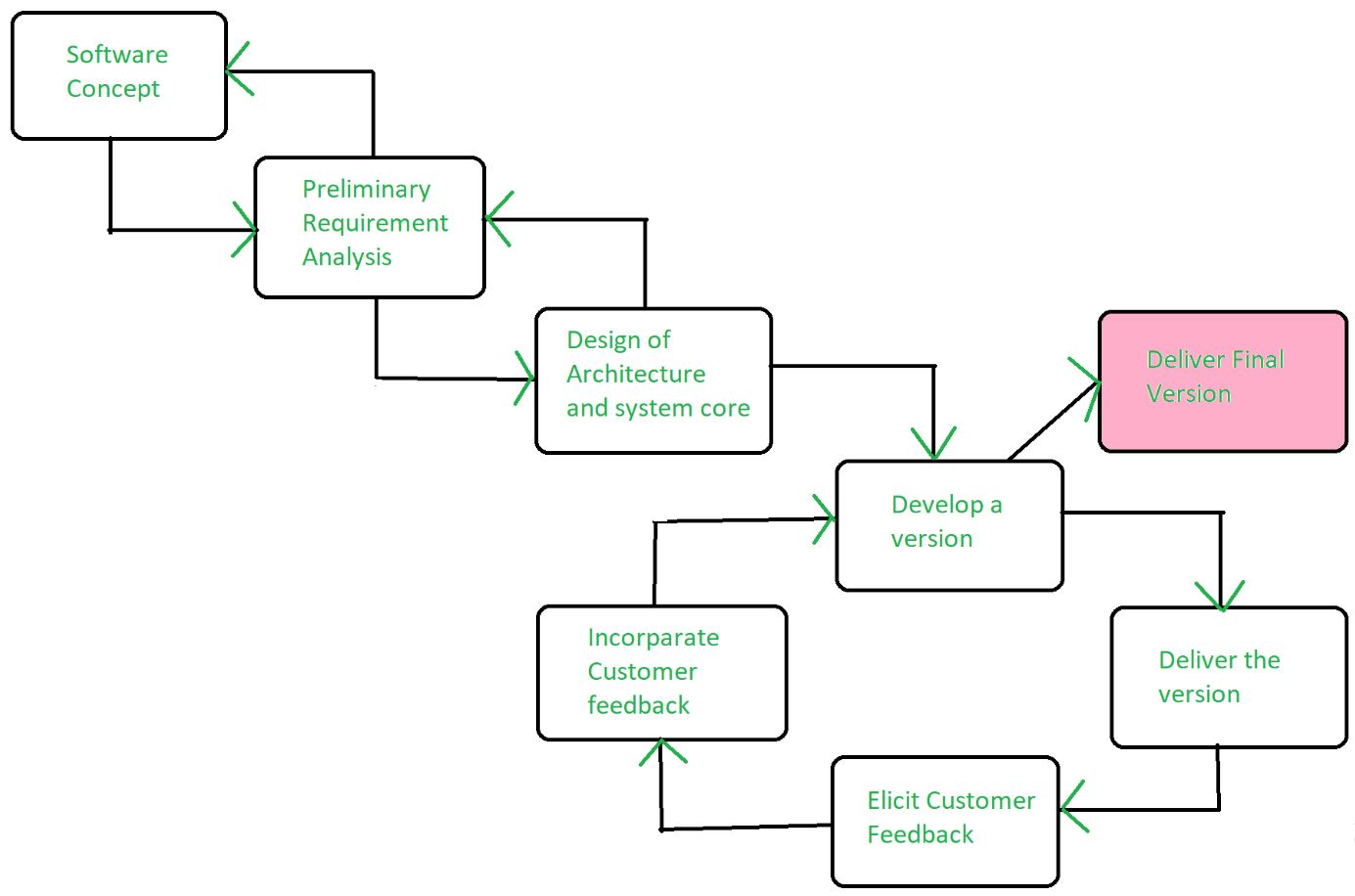Evolutionary Model – Software Engineering
Last Updated :
24 Jan, 2024
The evolutionary model is a combination of the Iterative and Incremental models of the software development life cycle. Delivering your system in a big bang release, delivering it in incremental process over time is the action done in this model. Some initial requirements and architecture envisioning need to be done. It is better for software products that have their feature sets redefined during development because of user feedback and other factors. This article focuses on discussing the Evolutionary Model in detail.
What is the Evolutionary Model?
The Evolutionary development model divides the development cycle into smaller, incremental waterfall models in which users can get access to the product at the end of each cycle.
- Feedback is provided by the users on the product for the planning stage of the next cycle and the development team responds, often by changing the product, plan, or process.
- Therefore, the software product evolves with time.
- All the models have the disadvantage that the duration of time from the start of the project to the delivery time of a solution is very high.
- The evolutionary model solves this problem with a different approach.
- The evolutionary model suggests breaking down work into smaller chunks, prioritizing them, and then delivering those chunks to the customer one by one.
- The number of chunks is huge and is the number of deliveries made to the customer.
- The main advantage is that the customer’s confidence increases as he constantly gets quantifiable goods or services from the beginning of the project to verify and validate his requirements.
- The model allows for changing requirements as well as all work is broken down into maintainable work chunks.

Evolutionary Model
Application of Evolutionary Model
- It is used in large projects where you can easily find modules for incremental implementation. Evolutionary model is commonly used when the customer wants to start using the core features instead of waiting for the full software.
- Evolutionary model is also used in object oriented software development because the system can be easily portioned into units in terms of objects.
Necessary Conditions for Implementing this Model
- Customer needs are clear and been explained in deep to the developer team.
- There might be small changes required in separate parts but not a major change.
- As it requires time, so there must be some time left for the market constraints.
- Risk is high and continuous targets to achieve and report to customer repeatedly.
- It is used when working on a technology is new and requires time to learn.
Advantages Evolutionary Model
- Adaptability to Changing Requirements: Evolutionary models work effectively in projects when the requirements are ambiguous or change often. They support adjustments and flexibility along the course of development.
- Early and Gradual Distribution: Functional components or prototypes can be delivered early thanks to incremental development. Faster user satisfaction and feedback may result from this.
- User Commentary and Involvement: Evolutionary models place a strong emphasis on ongoing user input and participation. This guarantees that the software offered closely matches the needs and expectations of the user.
- Improved Handling of Difficult Projects: Big, complex tasks can be effectively managed with the help of evolutionary models. The development process is made simpler by segmenting the project into smaller, easier-to-manage portions.
Disadvantages Evolutionary Model
- Communication Difficulties: Evolutionary models require constant cooperation and communication. The strategy may be less effective if there are gaps in communication or if team members are spread out geographically.
- Dependence on an Expert Group: A knowledgeable and experienced group that can quickly adjust to changes is needed for evolutionary models. Teams lacking experience may find it difficult to handle these model’s dynamic nature.
- Increasing Management Complexity: Complexity can be introduced by organizing and managing several increments or iterations, particularly in large projects. In order to guarantee integration and synchronization, good project management is needed.
- Greater Initial Expenditure: As evolutionary models necessitate continual testing, user feedback and prototyping, they may come with a greater starting cost. This may be a problem for projects that have limited funding.
Conclusion
The evolutionary model is a helpful framework in the quickly evolving field of software development, where requirements are frequently modified and user expectations change. As with any development process, optimizing the advantages and minimizing the possible negatives of evolutionary models in software engineering requires careful evaluation of project-specific considerations.
Share your thoughts in the comments
Please Login to comment...